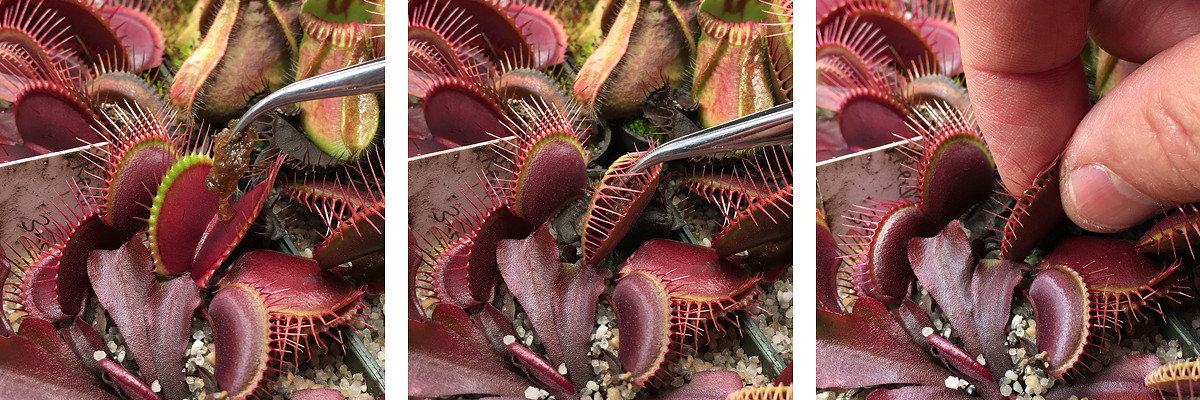
Its pretty cool seeing carnivorous plants hunt by themselves. The food chain doesn't stand anymore. It's evolution at his peak. Seeing a plant eating meat is outstanding. After seeing this once, you want to learn more for sure. Evolution just makes marvelous things. With odors, chemicals, amazing color designs and forms, stunning textures and ingenious tricks, a plant can catch and eat little animals! From nematodes for Genlisea, to little birds or rats for Nepenthes.
The way carnivorous plants eat and capture their prey varies a lot. You have pitchers, snap traps, sticky leaves, and some others. If you grow one or many carnivorous plants inside, or like me in a terrarium, the plants will not be able to catch anything, or very rarely. Feeding with dried blood worms (DBW) is a very good method of manual feeding. With a single product, a little bottle you keep next to your growing setup, you can feed the most picky and fragile plants. We will concentrate on Dionaea muscipula, the Venus fly trap (VFT). It is the most well known carnivorous plant.
The products called Freeze Dried Bloodworms or Blood Worms are made using chironomid midge larvae. Adult midges are non-biting insects also called lake flies.
Package labels contain this warning: This package contains bloodworms, a natural product to which some people may have an allergic reaction.
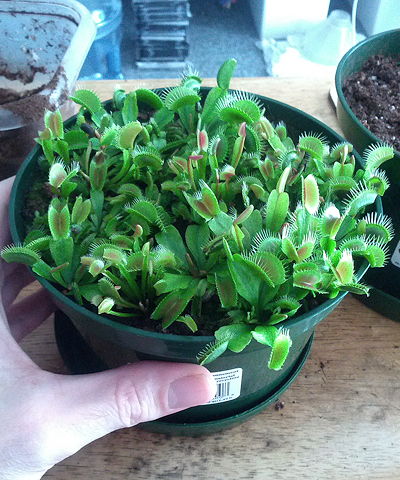
Here are seedling VFTs who are very hungry. Manual feeding of theses little plants is pretty easy and cheap. And if you feed them once a week, 1 or 2 traps on each seedling, you will dramatically increase the growing speed. The results can be VERY spectacular!
VFTs normally will only eat live food. We can trick them into eating dried blood worms, a kind of fish food.
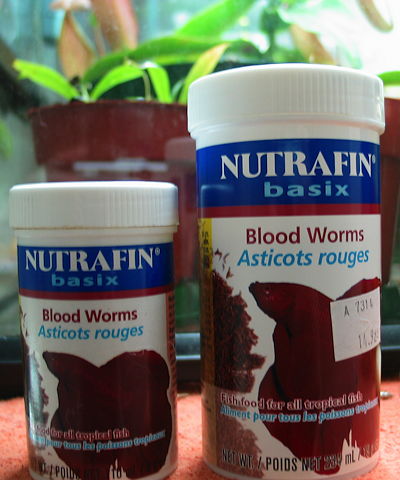
You can buy a little container (5 to 10 grams) of dried blood worms (DBW) for under $10 at pet shops. This amount is have enough food for a few years.
Before buying, look at the back of the container in the ingredients listing. Don't buy the product if you see something other than dried blood worms. Some DBW brands have additives that can damage your plants.
Theses little "worms" are really non-biting midge larvae. The adults look something like mosquitos. The larvae where frozen and then vacuum dried.
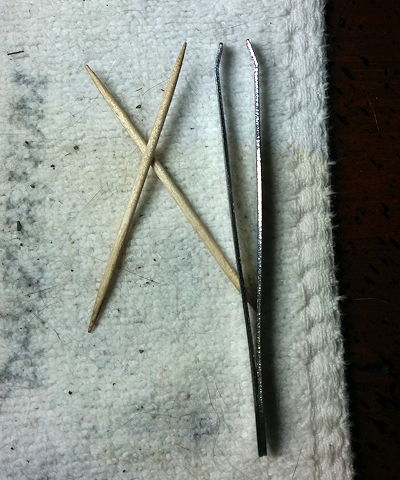
All you need to feed your VFTs, beside the DBW, are a couple of toothpicks and forceps.
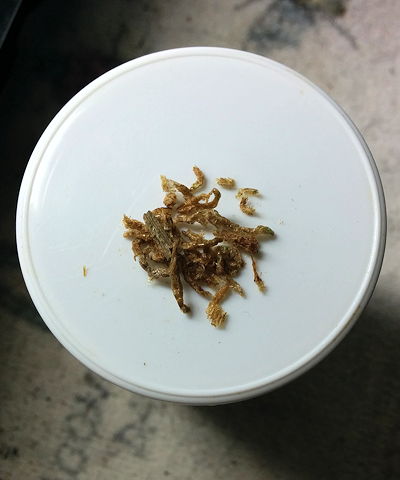
Like you can see, these worms are 100% dead little insects, very rich in protein.
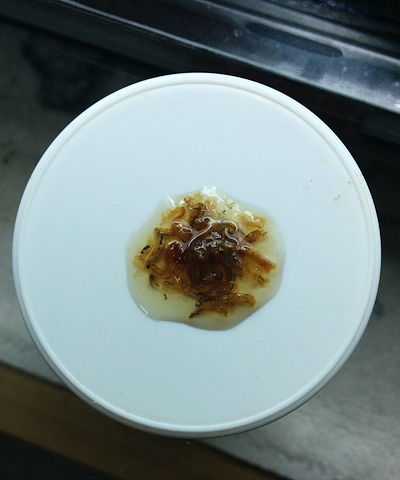
The first step is rehydrate the DBWs. This will mimic a real living insect. All you have to do is add a little bit of water to some "worms". Don't add water in the pot! Put a little quantity of worm on the pot cover or little dish and then add water. One or two drops is enough.
For feeding Pinguicula, it is best to grind the worms into powder. We will discuss that way of feeding later on this page.
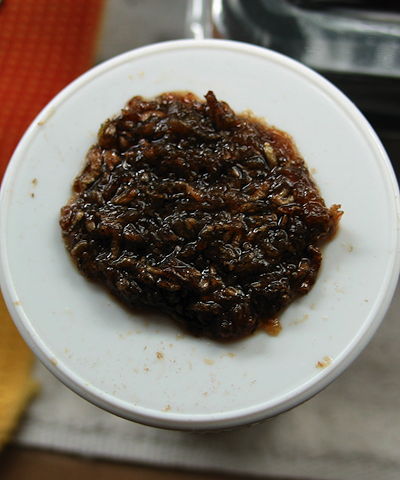
The result is a little meat ball. With this quantity, you can feed a VFT army! Remove the extra water with a towel paper.
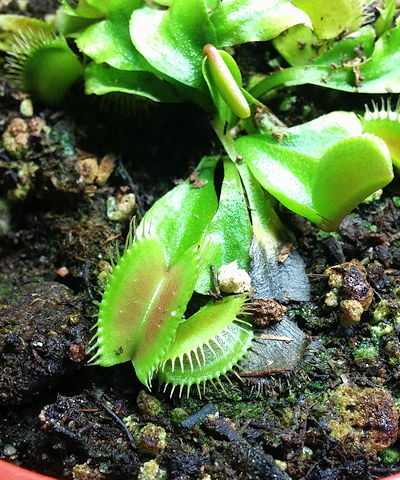
Now its feeding time! Remove some DBWs from the meat ball with a toothpick. Be sure the piece is about 1/3 size of the trap you want to feed. A too of a big piece will work, but the trap will die after the digestion. And you don't want this right?
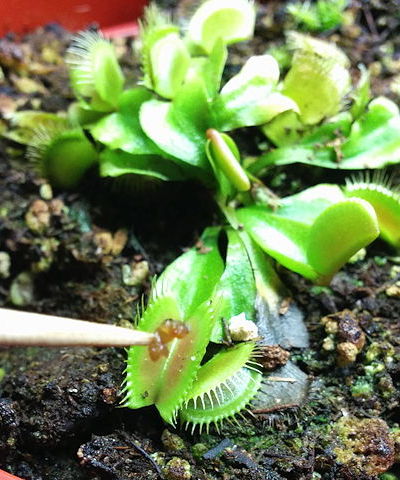
A normal healthy trap can reopen 3 or 4 times, and I like to feed always the same trap. That method will result as a better looking plant. With the toothpick, put the DBW piece into the trap and touch the inside trigger hairs a few times.
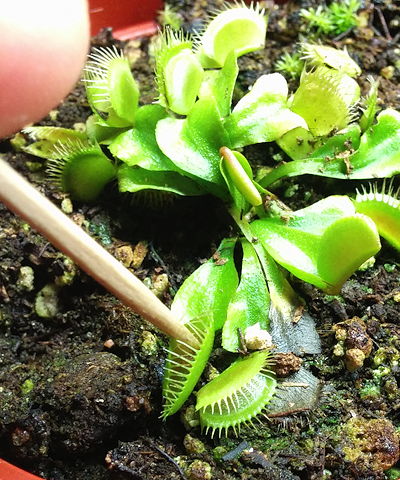
The trap will close. Remove the toothpick. Remember, VFT traps work in 2 phases; a closing phase and a sealing phase. Without the sealing, no digestion will occur.
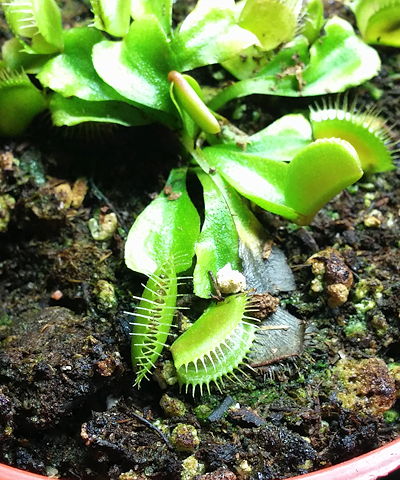
Now the phase 1 is completed, the trap is closed. You can easily see here that the trap is not sealed, but only closed.
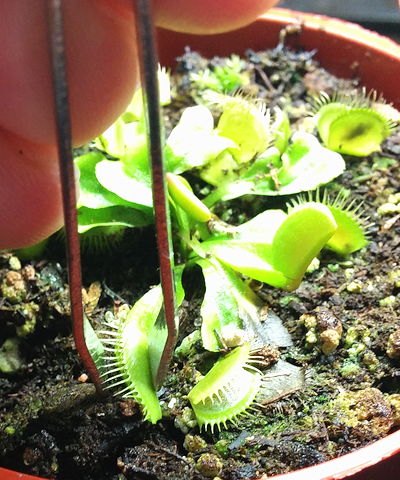
Now take the forceps and just press each side of the trap, very softly, to help the trap closing more tighter. If you press too hard with the forceps, the trap will be damaged.
The next step is to wait 30 minutes to 1 hour. Then use the forceps to press each side again.
Some people have success pressing the trap harder with their fingers immediately after feeding. This saves having to come back and press it again later. It can also damage leaves.
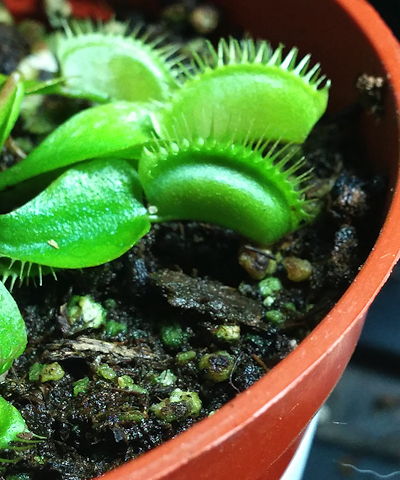
What you see here is a completely sealed trap! When a trap captures a living insect, its not a instant death. The little prey will continue to touch the trigger hairs again and again trying to escape. The trap will press a little more to suffocate the insect until it is completely sealed.
If you don't stimulate the trap enough for it to seal, it will reopen after 24 hours and the DBWs will remain undigested. If that happens put a drop of water in the trap to remoisten the DBWs, then trigger and squeeze the trap again.
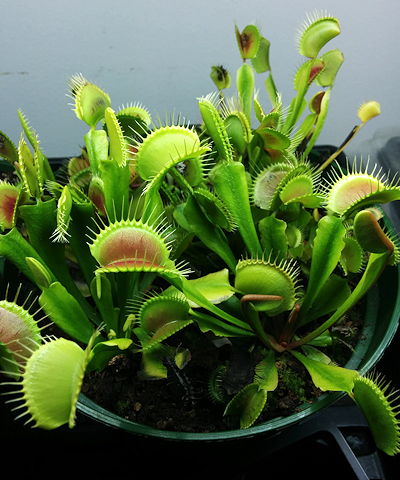
Now the seedlings are much bigger, in a very short time. These are 5 month old "seedlings". Like I said, with this is a feeding technique where you can help your plants reach an amazing growing speed. If you keep going that way, you can obtain adult flowering plants in less than a year!
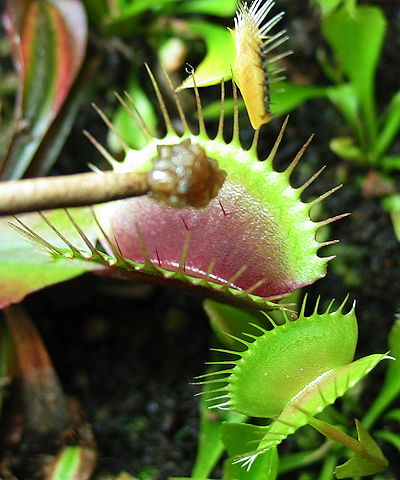
Of course, you should keep feeding your adult plants with dried blood worms. Your plant will be extremely well fed and will push a lot of tiny plants at the base.
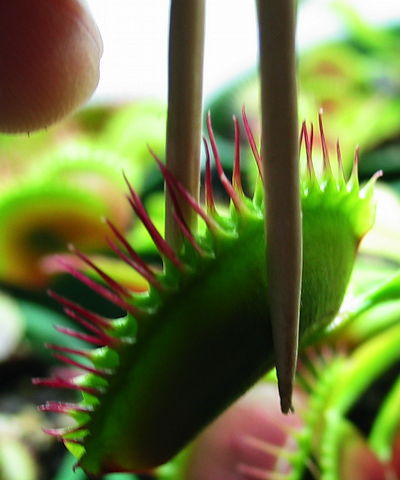
If you don't have forceps, you can press your traps with a couple of toothpicks or your fingers.
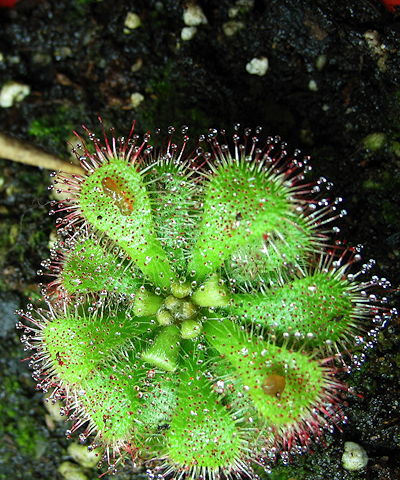
Almost all carnivorous plants can be fed with DBW. This is a Drosera with rehydrated worms on the leaves. If the temperature is warm enough, the Drosera will curve the leaf over the DBWs in 30 minutes. No stimulation is needed.
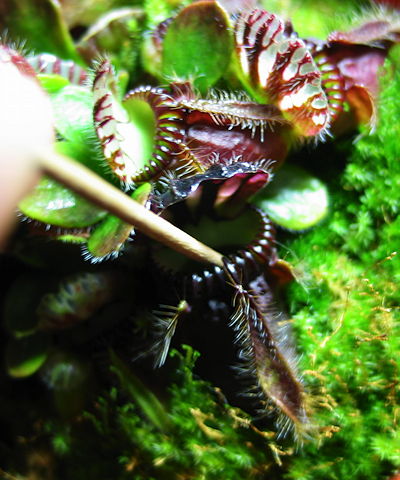
With Cephalotus, the technique is a little bit different. Put 2 or 3 tiny dried worms on the cover of the pot, and grind them to make powder. Dip a toothpick in water, touch the dust with it and bring tiny pieces of DBW dust into the pitcher.
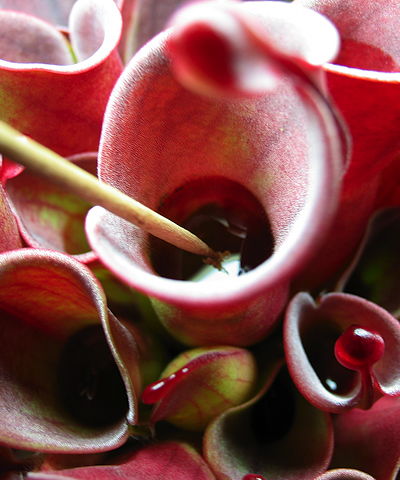
Same dusting method is used for Heliamphora, Pinguicula, Stylidium, Sarracenia purpurea and Nepenthes.
Here I feed a Heliamphora minor. After the operation, you will see a little dust cloud in the water of the Heliamphora pitcher.
Like you can see on this page, its a pretty easy way to feed your carnivorous plants. And very rewarding! DBW use is primary for beta fish. Its a very rich food, so you will notice a boost in the plants growing. I think you can call that thriving!
-- Francois Boulianne (Maiden)
